Abstract
In recent years, the cultivation of sweet potatoes has been attracting attention in Japanese agriculture. The national harvest volume for 2022 is 16.1kt, with the maximum fruiting tree area at 4.23kha. This data shows that productivity at Otou is increasing. In terms of shipping volume, Yamagata recorded the highest volume at 11.1kt, indicating that production volumes vary by region. Since the cultivation of sweet potato depends on the climate and land conditions, it is likely that differences will occur between regions. Furthermore, these data suggest the importance of Otou in Japanese agriculture, and encourage efforts toward its expansion and technological innovation in the future.
Cherry harvest yield (main data).
Japan’s apple harvest has undergone various changes between 1973 and 2022. At its peak in 1983, traffic volume nationwide reached 24.1kt, and has since fluctuated but shown a downward trend. The current yield is down to 66.8% of its peak. Several factors are contributing to this downward trend. For example, these include structural changes in agriculture, the reduction in farmland due to urbanization, a decrease in the agricultural labor force, and an increase in natural disasters due to climate change. Changes in dietary habits and international agricultural markets also affect yields. At the same time, efforts are being made to increase yields, including through advances in agricultural technology and the promotion of sustainable agriculture. In the future, more efficient and sustainable cherry cultivation will be required, taking these factors into consideration.
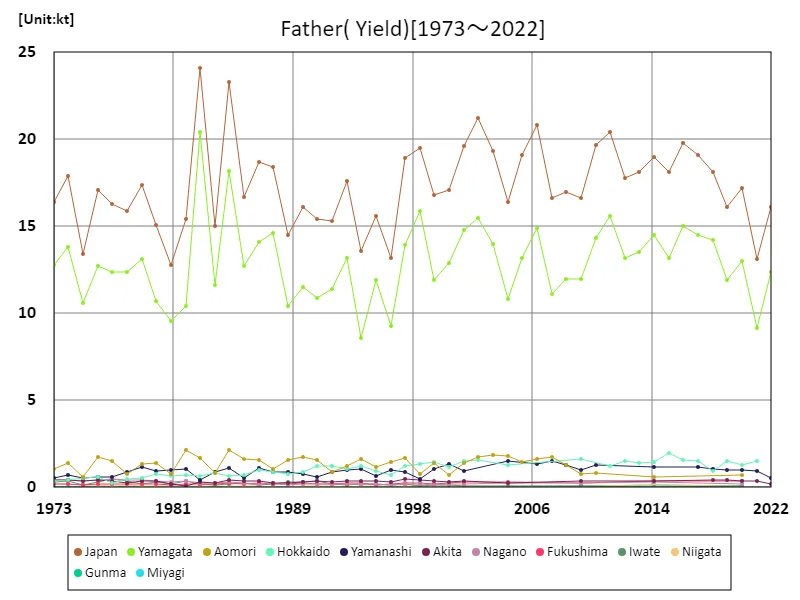

The maximum is 24.1kt[1983] of Japan, and the current value is about 66.8%
Cherry harvest volume (by prefecture).
In Japan, the harvest volume of sweet potato is currently at its peak, with Yamagata Prefecture recording the highest yield in the country at 12.4kt in 2022, the most recent year. The data shows large regional differences, with Yamagata Prefecture standing out as the largest producer. Cultivation of oak requires suitable climate and soil conditions, and these results reflect the fact that Yamagata Prefecture has these. It also suggests that yields in other regions are lower than in Yamagata. This is due to differences in climate and soil from region to region, suggesting differences in productivity between regions. In addition, advances in agricultural technology and changes in agricultural policies are also taken into account as factors that affect apple yields. In the future, it will be important to introduce more efficient cultivation techniques and promote sustainable agriculture, and there will be a need to balance harvest yields between regions.
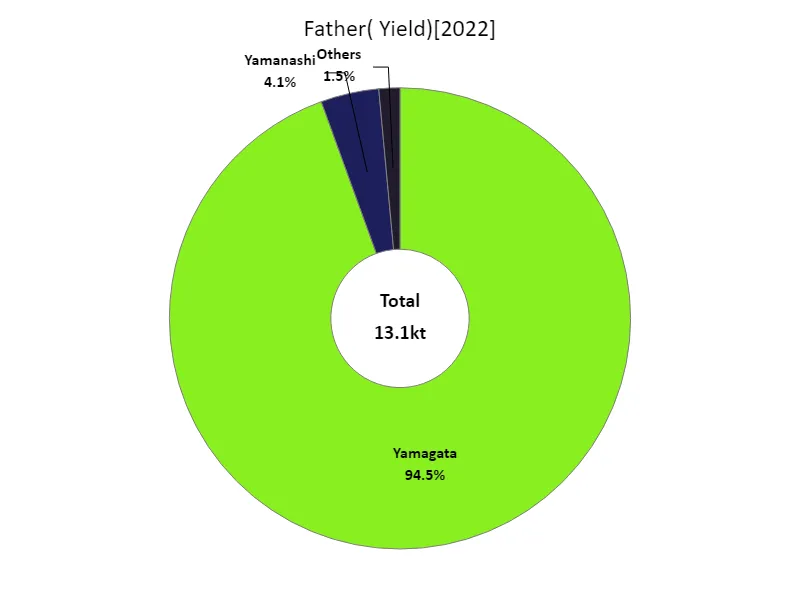

The maximum is 12.4kt of Yamagata, the average is 4.38kt, and the total is 13.1kt
Fruiting tree area of the oak tree (main data).
The area of fruiting trees in Japan has undergone various changes between 1973 and 2022. At its peak in 2006, the nationwide area recorded 4.49 kha, and although it has been declining slightly since then, the current fruiting tree area remains at 94.2% of its peak. This declining trend may be due to structural changes in agriculture, a decrease in farmland due to urbanization, a decrease in the agricultural labor force, and a shift to other crops. On the other hand, the area of fruiting trees has remained at about 94% of its peak, suggesting that demand for cherries cultivation is relatively stable. In addition, since the decline in fruit-bearing tree area of tallow trees is not excessive, it is possible that agricultural policies and technological advances are improving the productivity and efficiency of tallow trees. In the future, more effective efforts will be required, such as promoting sustainable agriculture and adopting cultivation methods suited to the characteristics of each region.
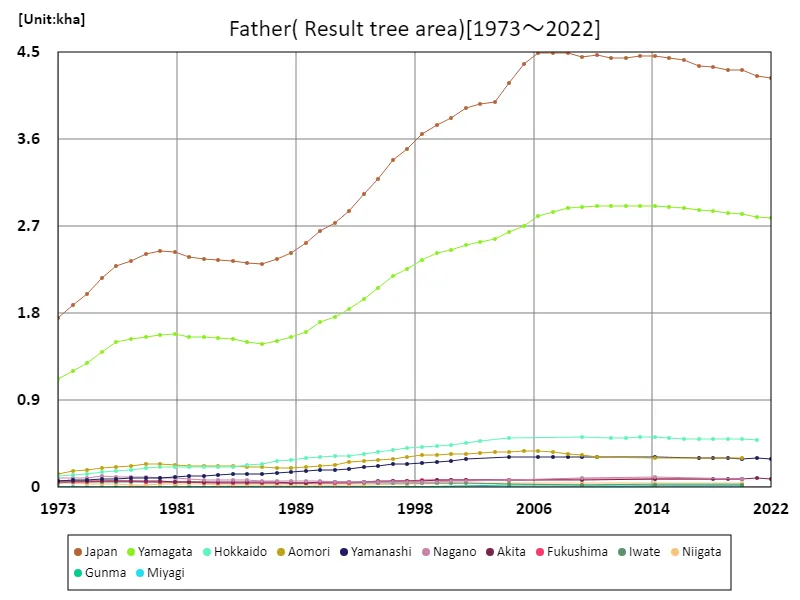

The maximum is 4.49kha[2006] of Japan, and the current value is about 94.2%
Fruiting tree area of oak trees (by prefecture).
The area of fruiting trees in Japanese agriculture is currently at its peak, with Yamagata Prefecture recording the largest area in the country at 2.79 kha in 2022, the latest available figure. The data varies by region, with Yamagata Prefecture showing the largest area of fruiting trees in the region. Yamagata Prefecture has a rich natural environment and suitable climatic conditions, making it well suited to cultivating sweet potatoes. On the other hand, other regions tend to have relatively low fruiting tree areas. This is due to differences in land conditions and climate from region to region, suggesting that suitable conditions are required for cultivating cherries. In addition, since the area of fruiting trees of the oak tree is the largest in Yamagata Prefecture, it is possible that the oak tree occupies an important position in the local economy. In the future, there will be a need to promote sustainable agriculture and introduce cultivation techniques suited to the characteristics of each region.
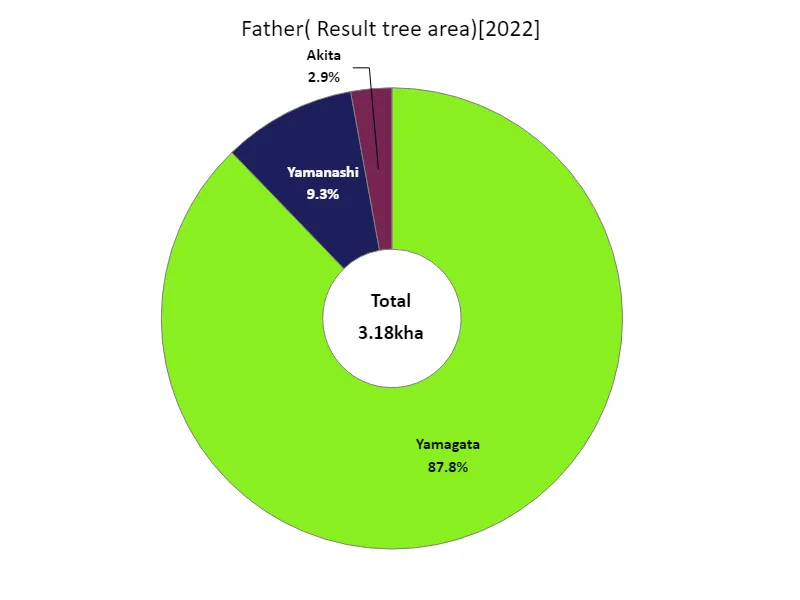

The maximum is 2.79kha of Yamagata, the average is 1.06kha, and the total is 3.18kha
Shipping volume of Utou.
In Japan’s agricultural sector, Yamagata Prefecture recorded the highest total volume of 11.1kt in 2022, the most recent year, with an average shipping volume of 3.93kt and a total shipping volume of 11.8kt. The data varies by region, with Yamagata Prefecture showing the largest volume of oyster shipments. Yamagata Prefecture has the climate and soil suitable for cultivating gourds, which indicates their high productivity. Meanwhile, shipments in other regions tend to be relatively low. This is due to differences in agricultural structure and market demand from region to region, and there are disparities in shipping volumes between regions. Additionally, since Yamagata Prefecture has the largest volume of shipped ume plums, it is possible that ume plums play an important role in the local economy. In the future, it will be necessary to promote sustainable agriculture and develop production plans tailored to the characteristics of each region.
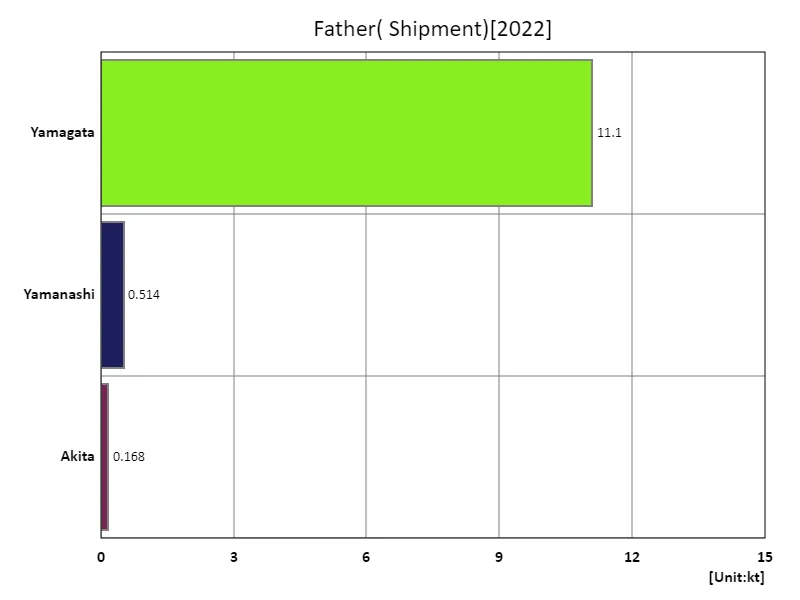

The maximum is 11.1kt of Yamagata, the average is 3.93kt, and the total is 11.8kt
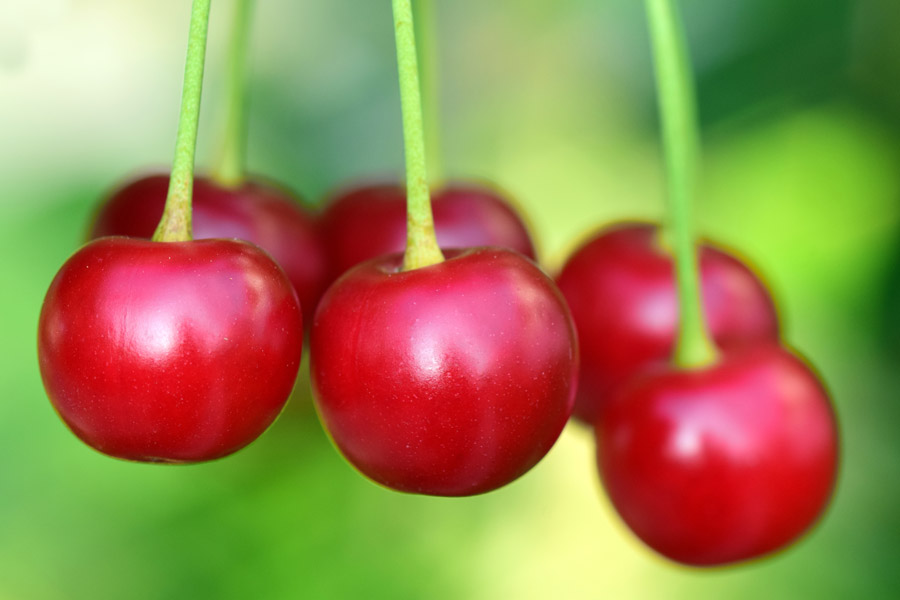


Comments